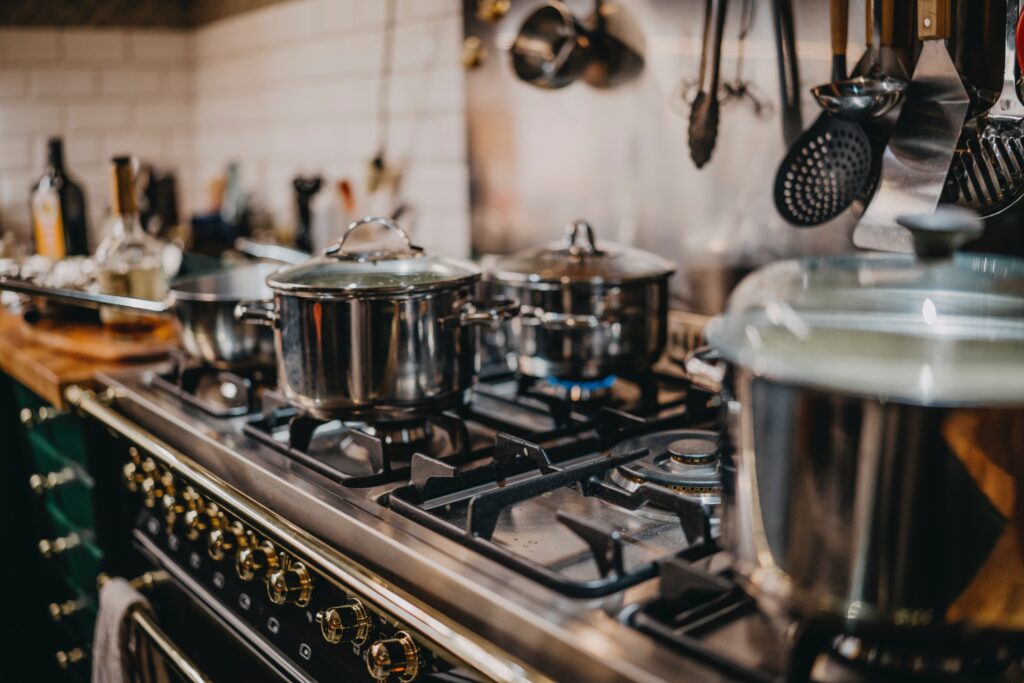Commercial kitchens are bustling, high-energy environments where efficient workflow and maximum storage capacity are essential to keep things moving smoothly. From small cafes to large restaurants, proper planning and execution of a commercial kitchen design can significantly impact the success of the establishment.
Here are some tips on how to maximize storage and workflow in a commercial kitchen design:
Prioritize Equipment Placement:
When designing a commercial kitchen, it’s essential to prioritize the placement of equipment to ensure efficient workflow. Start by placing the equipment that is used the most frequently, such as grills, fryers, and ovens, in easily accessible locations. This way, chefs can quickly move from one station to the next without having to navigate around other equipment or obstacles.
Create Separate Stations:
One way to maximize workflow and storage capacity in a commercial kitchen design is by creating separate stations for different tasks. For example, have a separate station for food prep, cooking, and plating. This way, chefs can focus on their specific tasks without interfering with others. Additionally, separate stations can prevent cross-contamination, ensuring food is prepared safely and to the highest standards.

Optimize Storage Space:
Storage space is crucial in a commercial kitchen, and maximising it as much as possible is essential. Start by creating a detailed inventory of all the ingredients and equipment that will be used in the kitchen. This inventory will help determine how much storage space is needed and where it should be located.
Consider installing shelving, racks, and cabinets that can be adjusted or repositioned as needed. This flexibility can help accommodate changes in inventory or the addition of new equipment. Also, consider installing shelves or racks above the prep stations or cooking equipment to free up counter space and keep essential items within easy reach.
Choose Durable Materials:
Commercial kitchens are high-traffic areas, and equipment and materials need to withstand heavy use. When choosing materials for your commercial kitchen design, opt for durable options that can withstand heat, moisture, and frequent cleaning. Stainless steel, for example, is an excellent choice for countertops and equipment because it’s easy to clean and resists rust and corrosion.
Focus on Safety:
Safety should be a top priority when designing a commercial kitchen. Start by ensuring that all equipment is installed correctly and that the workspace is designed to prevent accidents. Consider installing non-slip flooring, fire suppression systems, and adequate ventilation to keep the kitchen safe for both employees and customers.
Plan for Growth:
Commercial kitchens should be designed to accommodate growth and changes in demand. Start by considering the maximum capacity of the establishment and plan accordingly. If the kitchen is designed to handle a specific volume of customers, it may need to be reconfigured or expanded as the business grows.
Invest in Quality Equipment:
Quality equipment is an essential part of a successful commercial kitchen design. While it may be tempting to opt for cheaper equipment, investing in high-quality equipment can save money in the long run. Durable equipment that can withstand heavy use will require less maintenance and replacement, reducing the overall cost of ownership.
Consider the Customer Experience:
The customer experience should also be considered when designing a commercial kitchen. If the kitchen is visible to customers, it should be designed to be aesthetically pleasing and clean. Consider adding lighting to showcase the food and using materials that are easy to clean and maintain.
Test the Design:
Before finalizing the design of a commercial kitchen, it’s essential to test it out in real-life scenarios. This can help identify any issues or inefficiencies in the workflow and allow for adjustments to be made before the kitchen is fully operational.
In conclusion, maximizing storage and workflow in a commercial kitchen design is essential to the success of the establishment, as a commercial kitchen consultant, HPG Consulting takes pleasure in generating the most outstanding value and return on investment for every dollar spent. Prioritizing equipment placement, creating separate stations, optimizing storage space, choosing